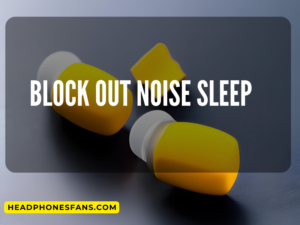A Subwoofer can be a key component in any high-quality audio system. It offers a rich, immersive audio experience. To unlock the full potential of your subwoofer you must pay attention to the materials used to house it. The material of the subwoofer’s box can have a significant impact on its overall sound. What makes one material superior to another? We’ll explore the nuances of choosing the best material for subwoofer boxes to enhance your sound experience.
Factors that Influence Sound Quality of a Subwoofer Box
When it comes time to optimize the performance of your Subwoofer, there are several factors that come into play. The enclosure’s size, design and material are all important factors.
A subwoofer should be sturdy and robust to resist vibrations and provide a powerful and clear bass response. The material you select will have a significant impact on these characteristics.
Some common materials for subwoofer boxes include plywood, particleboard and medium-density fibreboard (MDF). Which is the best of these materials?
Medium-Density Fiberboard
MDF is a popular material for subwoofer enclosures, and with good reason. Its consistency and density provide a great platform for a clear, deep bass. MDF’s dense nature helps reduce unwanted resonance and improves the sound quality. Our guide to matching speakers and amps may be helpful if you are looking to build a subwoofer box.
MDF is not without its flaws despite its popularity. It is best used indoors, but not outdoors. MDF can be damaged by water and warp with time. While it may be ideal for a home theatre system such as Klipsch’s SPL-120 it would not be the best option for portable speakers like the JBL PartyBox.
Plywood
The next option is plywood. This is a fantastic alternative to MDF. Birch plywood is a great alternative to MDF. It has similar strength and density, but it’s more resistant to moisture. It is therefore a good choice for marine and outdoor applications. A plywood subwoofer is a great option if you are a lover of portable sound systems.
The surface of plywood can be uneven, which makes it slightly more difficult to work with.
Particleboard
Particleboard offers a more affordable alternative to MDF or plywood. Particleboard is made of wood particles or chips combined with resin, and then pressed into sheets. It’s easy to use because it is light and cheap, but less durable than MDF or plywood. It can lead to a box with a poor bass response, and one that may not last. When you are considering high-end sound systems such as the Yamaha TSR700 and the Denon X3700H invest a little more in the material of the subwoofer boxes.
It would be prudent.
Fiberglass
Fiberglass is a great option for subwoofer enclosures. The process of creating a fiberglass enclosure is more time-consuming and complex than using wood. However, the final product can be an extremely lightweight, strong enclosure, which can be molded in intricate shapes that fit your space perfectly.
If you are creating a custom-built system with components such as Kicker45TL7R102, or need a small solution for the best bookshelf speaker under 2000, a fiberglass enclosure is something that might be worth considering.
It’s important to remember: No mater what material you use, it is essential that the interior of the box be sealed and have the correct amount of insulation. This will reduce vibrations and enhance the sound quality.
The conclusion of the article is:
The right material for the subwoofer enclosure is crucial to achieving the best possible audio performance. MDF is the most popular material due to its combination of cost and performance. The final decision should be based on your needs. This includes the environment where the subwoofer is to be used, as well as your budget and durability requirements.
It is important to make sure that your chosen material matches the rest of the sound system. This includes the receiver, speakers and wiring. Check out our comparisons such as Klipsch vs. R-52C and Cl2 vs. CL3 wire for more information about how different components affect your audio quality. Keep an eye out for the next article in which we explore the pros and cons of each material, and give detailed recommendations for various scenarios.
What is the Best Material for Your Subwoofer? A deep dive into its advantages and disadvantages
In the first section of this article we discussed the importance of subwoofer boxes and some of the most commonly used materials, including MDF, particleboard and plywood. We will examine the advantages and disadvantages of each of these materials in greater detail.
MDF: Pros and cons
Advantages
-
Density: The MDF is extremely dense and durable, resulting in a superior sound. Its consistency offers a deep and clear bass response. MDF is a great choice for audiophiles who prefer R-120SW and similar high-end Subwoofers.
-
Easy to Work with: MDF can be easily cut, drilled, and finished, making it a great choice for DIY subwoofer boxs.
Disadvantages
- Resistant to Moisture: The MDF can warp with time due to humidity and moisture. It may not be a good choice for areas exposed to these elements.
Plywood – The Good and the Bad
Advantages
-
Moisture Resistant: Plywood is more resistant to moisture than MDF. This is an excellent choice for outdoor uses, like for a JBL Encore Portable Speaker System.
-
Strength Plywood has a high strength, which makes it ideal for large subwoofer boxes.
Disadvantages
-
Price: Birch plywood and higher grades are generally more expensive.
-
Surface Finish: Plywood may have an uneven surface that requires additional finishing.
Particleboard: a closer look
Advantages
- Economical: Particleboard offers a cost-effective alternative to MDF or plywood.
Disadvantages
- Durability Particleboard has a lower density and is less durable than MDF and plywood. This could affect the sound quality and lifespan of the subwoofer.
Fiberglass: A Unique Option
Advantages
-
Lightweight – Fiberglass, being lightweight, is an excellent material for subwoofers in portable or vehicle boxes.
-
Customizable : Fiberglass is a flexible material that can be molded to any shape. This offers unlimited design options.
Disadvantages
-
Fiberglass is difficult to work with: Working fiberglass requires patience and more skill. This may not be the best option for DIY enthusiasts.
-
Cost: The cost of fiberglass is higher than that of other materials commonly used.
The material that you select for your subwoofer will have a significant impact on the sound quality and durability of your system. Your decision should be influenced by factors such as the cost, the environment and your personal preferences. If you are building a home theatre system using best home theater systems you might want to consider MDF or plywood. For outdoor speakers or portable speakers like 9 Best Portable Speakers with Aux Input, plywood or fiberglass may be better.
We will give you specific recommendations in the final and next part of this article for different scenarios, to help make an informed decision about the best material for subwoofer boxes. Stay tuned!
Recommended Subwoofer Box Materials for Each Scenario
We will now provide recommendations for specific applications, based on our discussion of the pros and cons of various subwoofer boxes. You’ll find the perfect material for your subwoofer boxes here, whether you’re creating a DIY project or setting up a home theater, installing car audio, or creating custom projects.
Home Theatre Systems
Sound quality and durability are important considerations for home theater applications. Medium Density Fiberboard is therefore the best choice. The high density of MDF ensures excellent sound reproduction – especially for bass notes – making it ideal for high-end audio systems such as the Denon X3700H. MDF is also less susceptible to moisture in indoor environments. If your budget permits, you can also consider plywood. The superior strength of plywood allows it to support large subwoofers like those in Yamaha TSR700 systems.
Car Audio Systems
Consider fiberglass if you are looking for a material to make a subwoofer enclosure for your vehicle. It is lightweight and therefore ideal for vehicle applications. It can also be molded to any shape that fits the space. Compare Kicker SDR-3X8D2 with kicker 45TL7R102 for excellent subwoofers that you can install in any vehicle.
Outdoor Applications
Material is important for outdoor sound systems like the party box 710. It must be able to withstand moisture and changes in weather. Plywood, which is resistant to moisture and changes in weather conditions, makes a great choice. Fiberglass could be an option if budget allows.
DIY Projects
MDF’s ease of use makes it an ideal choice for DIY enthusiasts who want to create a custom-made subwoofer enclosure. You can easily cut, drill and finish MDF to create custom designs. Check out our guide on How to connect a cross over to an amplifier for help with your DIY audio projects.
The best material for a subwoofer box depends on many factors, including the budget, the type of application and the personal preference. Understanding the pros and cons for MDF, particleboard and plywood will help you make the right decision.
Keep in mind that the material of your subwoofer will affect its overall performance. It’s important to match your subwoofer with the correct amplifiers and speakers in order to get the best results. Check out our guides on the best amplifiers to use with ceiling speakers, and the best bookshelf speaker under 2000 for more information. HeadphonesFans.com will take you on a sonic adventure!

Hey there mobile audio lovers! My name is Darlene R, founder and chief editor at headphonesfans.com. Ask any mobile audio fanatic, installer, or company rep what makes a good car speaker, sub or amp, or, better yet, why he or she prefers a certain brand over another, and be prepared to endure a litany of opinions, viewpoints, and passion-fueled perspectives. To be honest, mobile audio shopping can be a daunting task without a guide, so I’ve assembled what I feel are the best products to consider to make things easier for you. Welcome headphonesfans.com!





